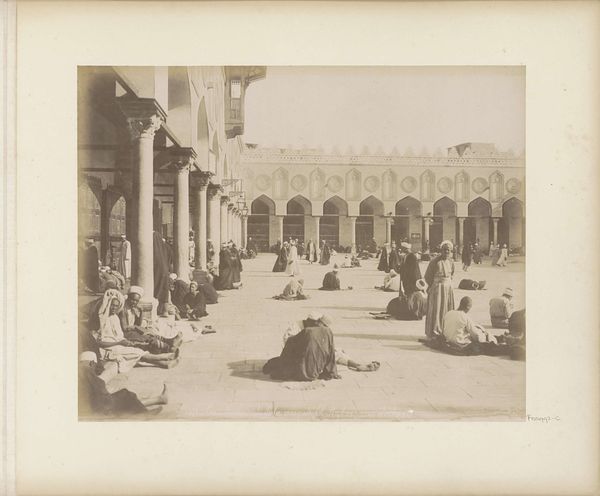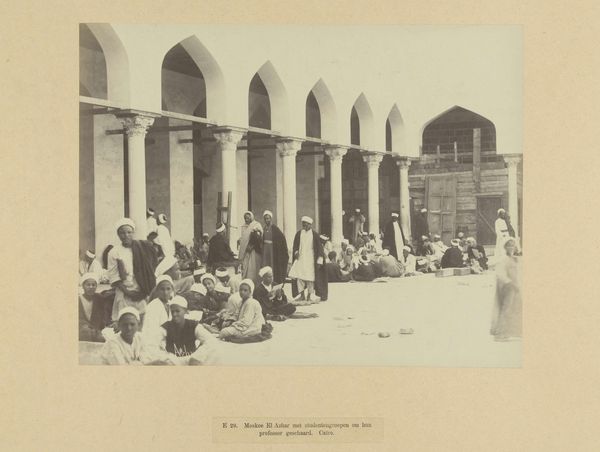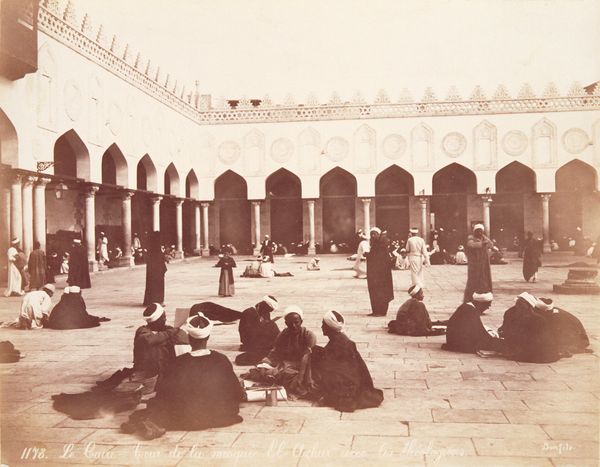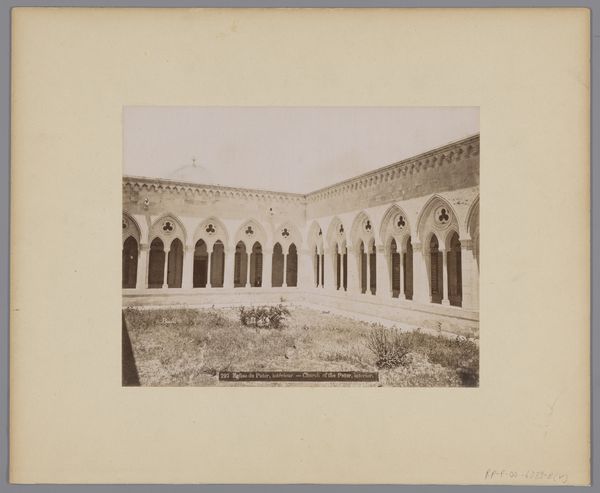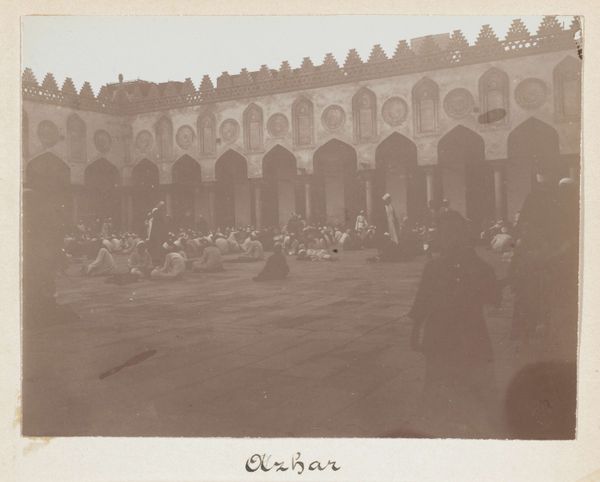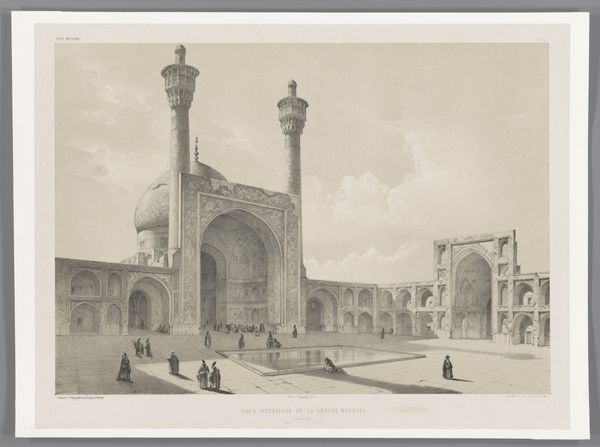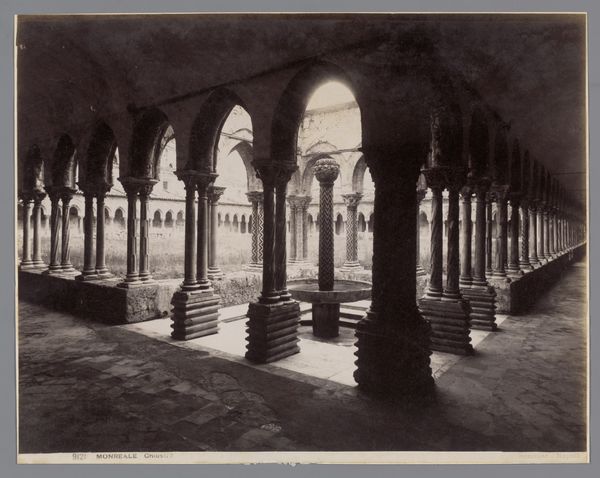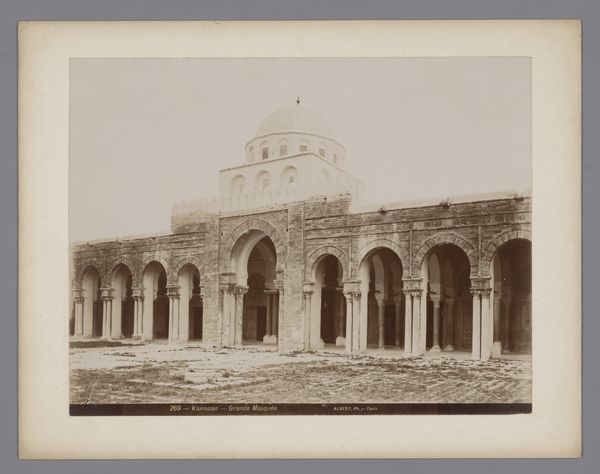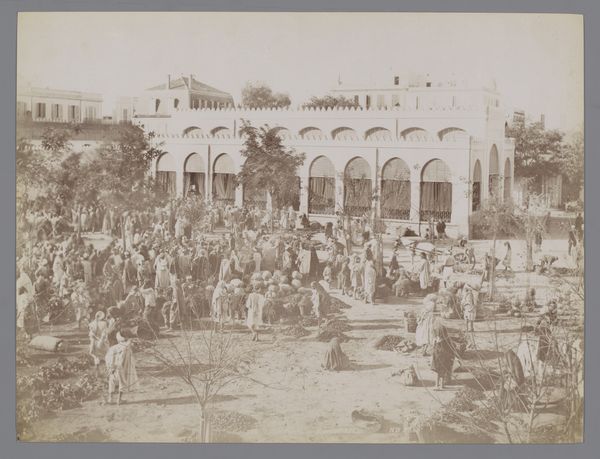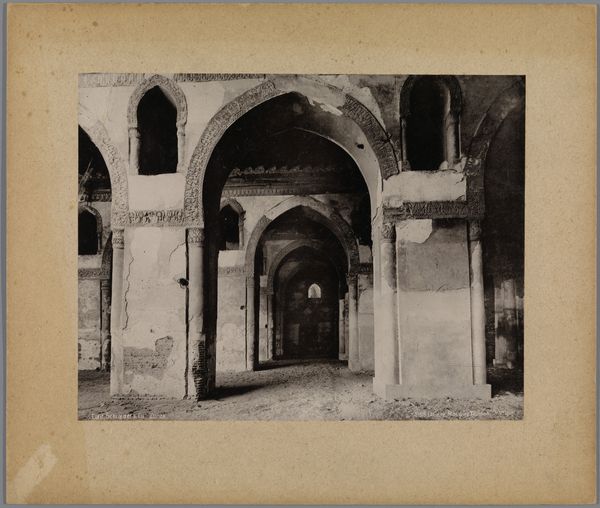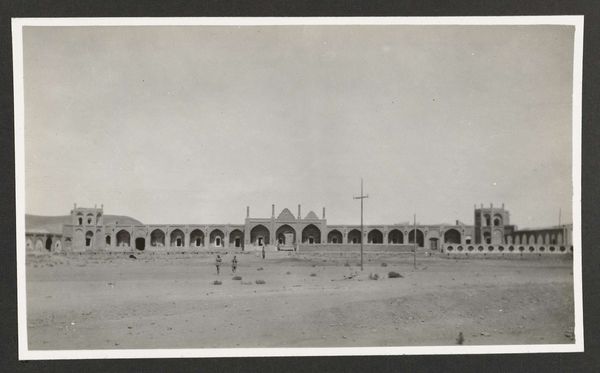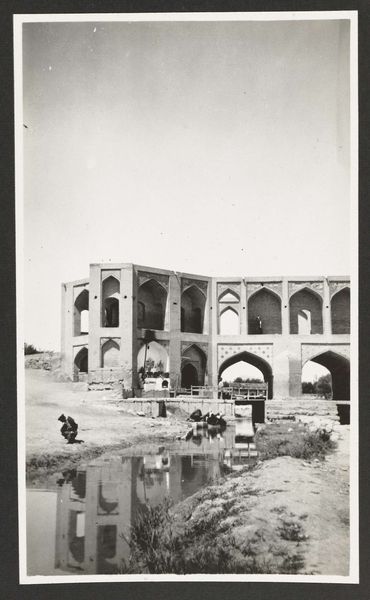
photography, albumen-print, architecture
#
16_19th-century
#
historic architecture
#
photography
#
historical photography
#
orientalism
#
19th century
#
cityscape
#
islamic-art
#
albumen-print
#
architecture
Dimensions: height 213 mm, width 275 mm
Copyright: Rijks Museum: Open Domain
Editor: Here we have an albumen print, a photograph entitled "Binnenplaats van de Al-Azhar-moskee te Caïro met studenten," placing it sometime between 1875 and 1900. The composition really draws me in, this almost geometric arrangement of figures within this grand architectural space... what strikes you about it? Curator: I'm drawn to the repeating circular motifs adorning the building's facade. Note how they echo the communal gatherings within the courtyard. Do you see that interplay? These shapes aren't arbitrary; they’re symbols of unity, eternity, of shared learning and spiritual connection. It's like a visual echo connecting the human and the divine, hinting at the symbolic importance of Al-Azhar as a center of knowledge. Editor: I see what you mean. The circles draw your eyes around the courtyard, reinforcing a sense of community. Do you think the photographer was intentionally trying to create a harmonious scene, or simply documenting the architecture? Curator: It's a delicate balance, isn't it? Orientalist photography often carries complex baggage. There's certainly a documentarian impulse, yet the framing, the play of light and shadow... These contribute to an aesthetic interpretation, laden with cultural assumptions. Think of how Western audiences viewed the ‘Orient’ then: exotic, timeless… perhaps the photographer intended to reinforce those stereotypes. Editor: So it's less of a neutral document and more of a constructed narrative? Curator: Precisely! The photograph becomes a vessel carrying not just the image of a place, but also layers of meaning projected onto it by the photographer, by its intended audience. We can then interpret it from the viewpoint of cultural memory and continuity. It is all about trying to explore images that have an emotional, psychological, or cultural resonance that stretches through time. Editor: This has made me reconsider the role of photography in shaping our perceptions of different cultures. Curator: Exactly. Paying attention to symbols is crucial to seeing photographs like this one in richer detail.
Comments
No comments
Be the first to comment and join the conversation on the ultimate creative platform.
